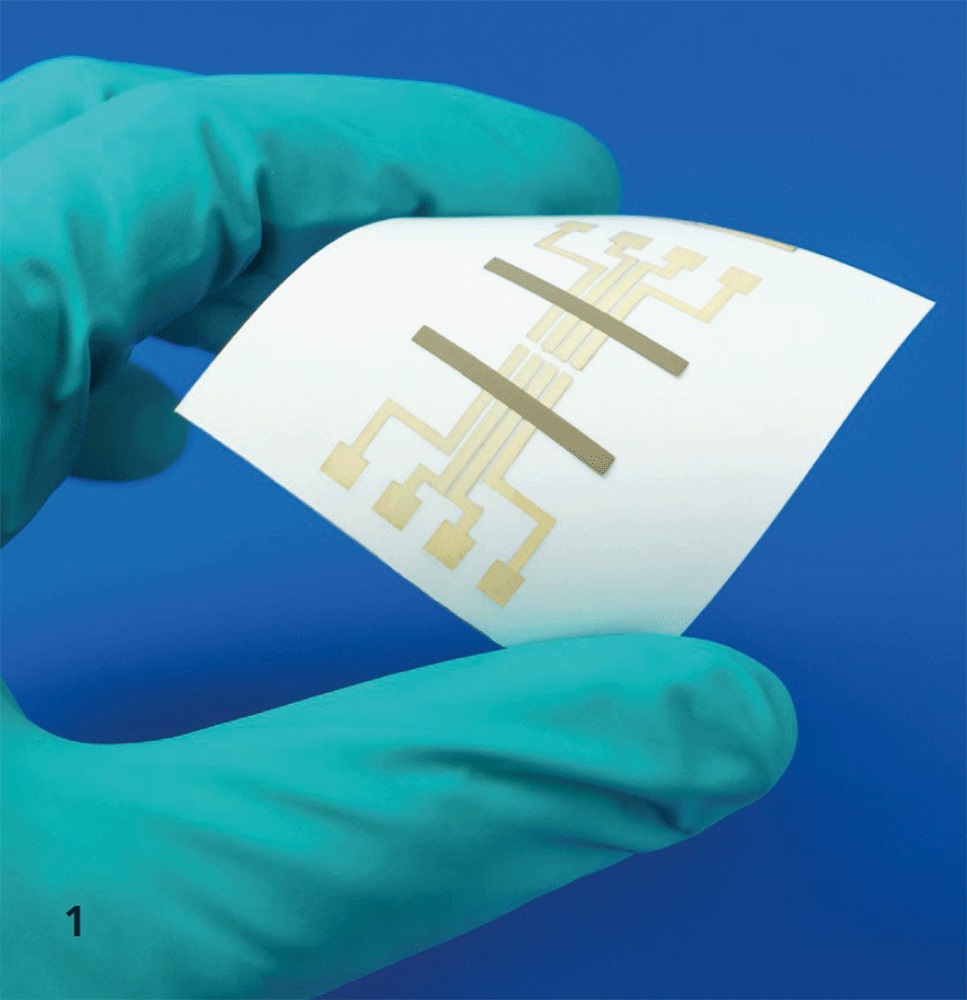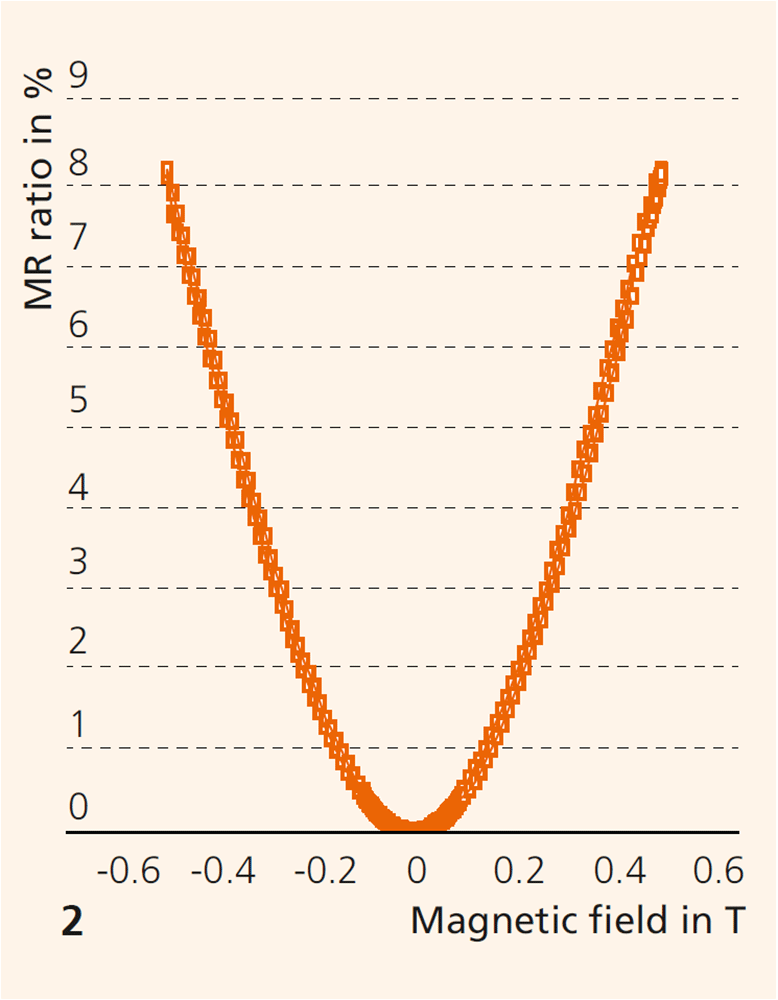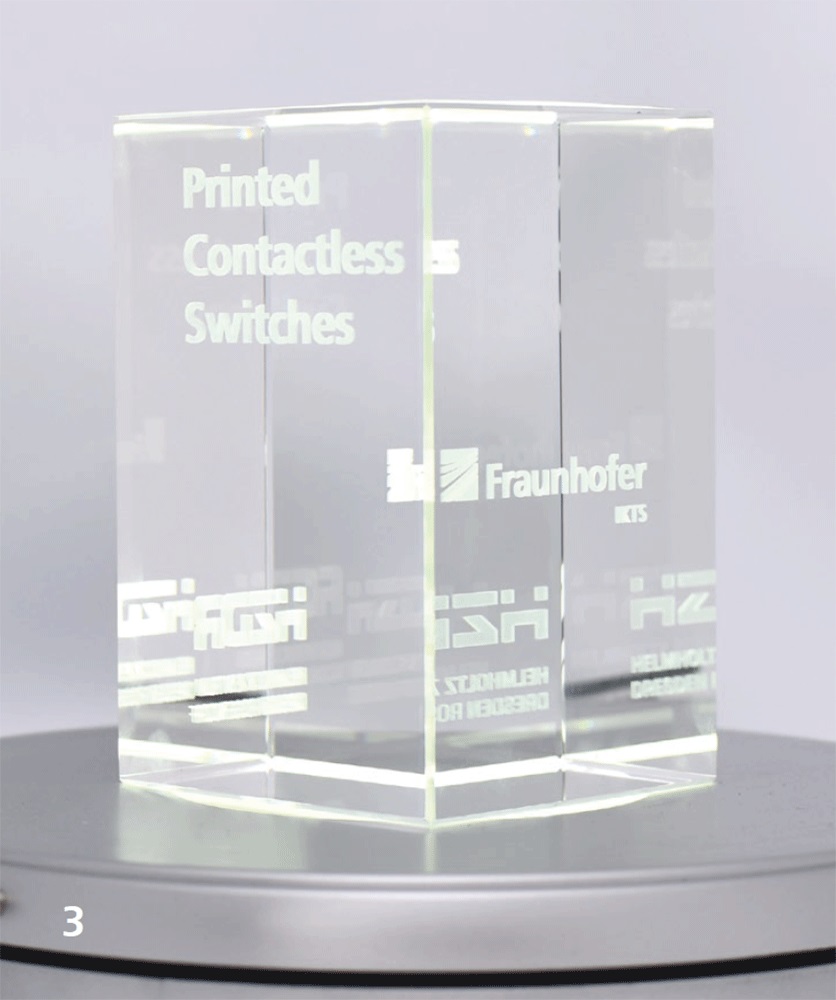
Printed flexible magnetic field sensors using cost-efficient materials
Current research




Magnetic field sensors are used to detect any kind of movement, they are key components of modern electronic compasses and contactless switches. Currently available commercial sensors are realized via thin-film vacuum-based technologies on rigid substrates and are therefore inflexible, bulky and relatively expensive to produce. Preparing magnetic field sensors through printing methods of industrial relevance, such as screen printing or inkjet printing, is a promising approach to make them mechanically flexible, reduce costs and facilitate their integration with various measurement systems.
The only printed magnetic field sensors currently available are based on the giant magnetoresistive (GMR) effect and are realized by brush painting. This preparation method is difficult to scale up because it requires physical vapor deposition (PVD) of GMR thin films on sacrificial layers as well as their consecutive delamination and milling to prepare a printable paste.
Therefore, Fraunhofer IKTS and Helmholtz-Zentrum Dresden-Rossendorf (HZDR) started to develop, in close cooperation, fully printed magnetic field sensors based on common and cost-effective materials with a high magnetoresistive (MR) effect. Starting with the powder with magnetoresistive properties, pastes were formulated and the sensor structures with contact pads were deposited on various substrates (polymer films, paper, etc.) using screen, inkjet and dispenser printing (Figure 1). The structures were sintered in air within milliseconds using micro-optically optimized diode laser arrays. This rapid sintering is of critical importance for preventing oxidation of the active material in air and to realize field sensors with MR ratios as high as 8 % at 500 mT (Figure 2).
The functionality of the sensor as a printed switch was subsequently demonstrated (Figure 3). In the demonstrator, the permanent magnet approaches the sensor. The resulting stronger magnetic field increases the electrical resistance of the sensor. An analog logic circuit converts the change in resistance into an on-off signal. The light source is thus switched on or off. This is the first known demonstration of a fully printed magnetic field sensor fabricated using easily scalable methods and commercially available materials.
Because these sensors can be manufactured in large quantities at low prices, they are of particular importance for non-contact switching applications. Thanks to their mechanical flexibility, they have the potential to replace conventional reed sensors in many areas, especially in human-machine interaction applications. Following technology demonstration at a laboratory scale, the researchers at IKTS and HZDR are now looking for industrial partners for further joint development, technology transfer and upscaling.
Supported by
